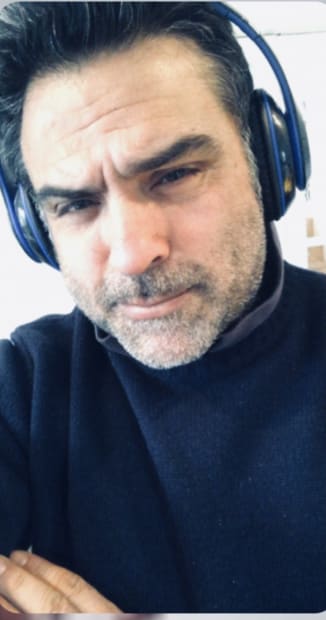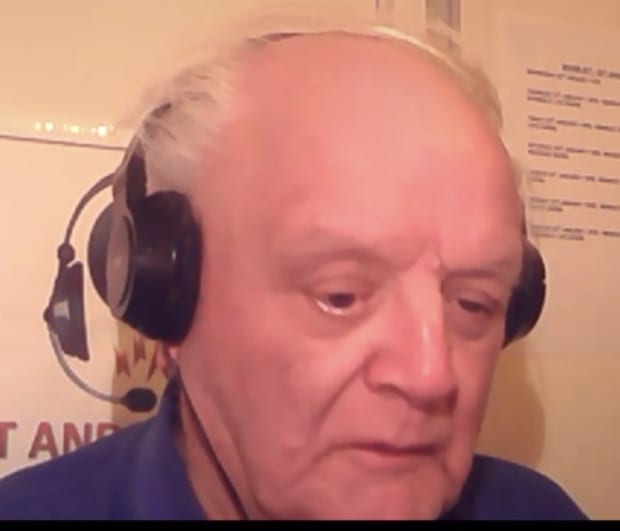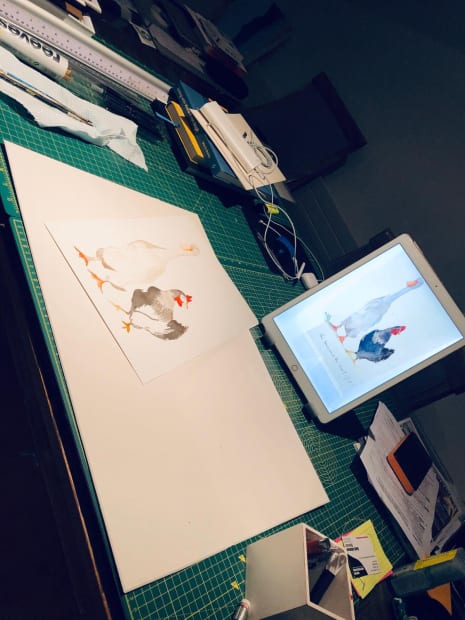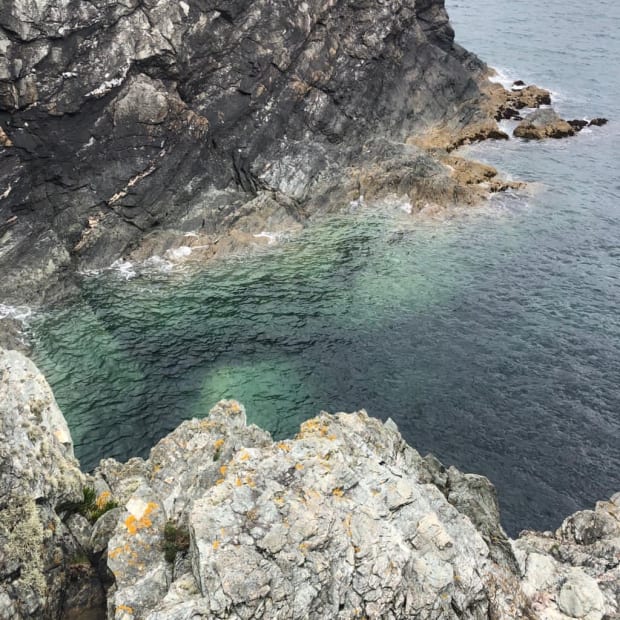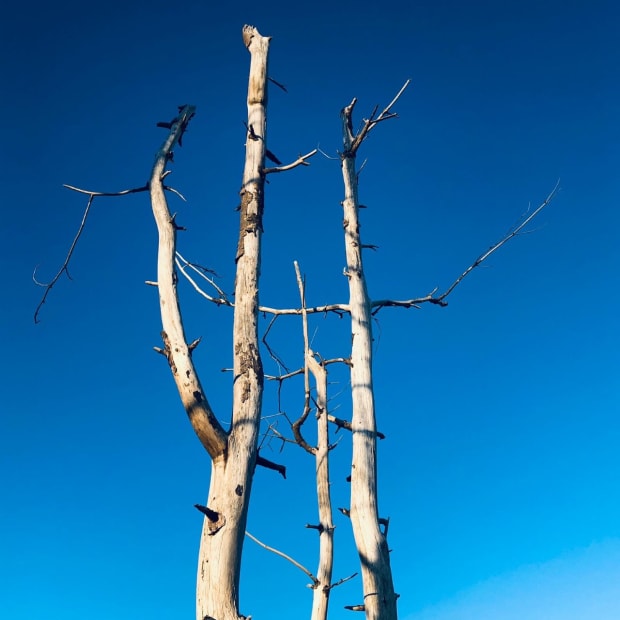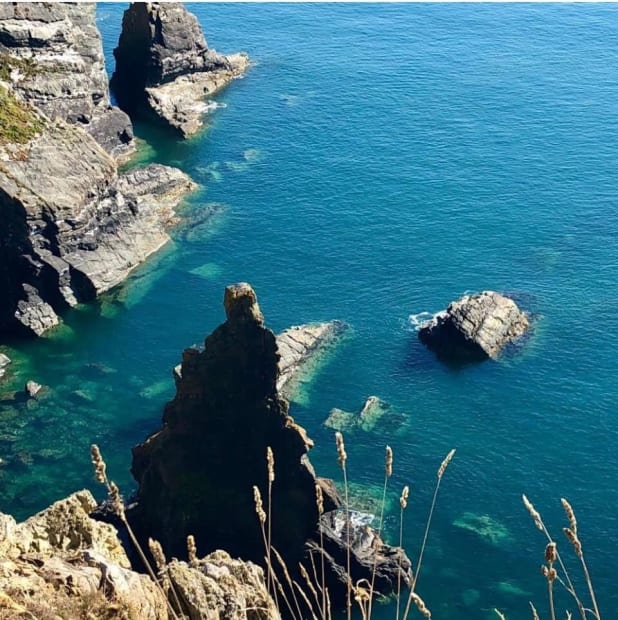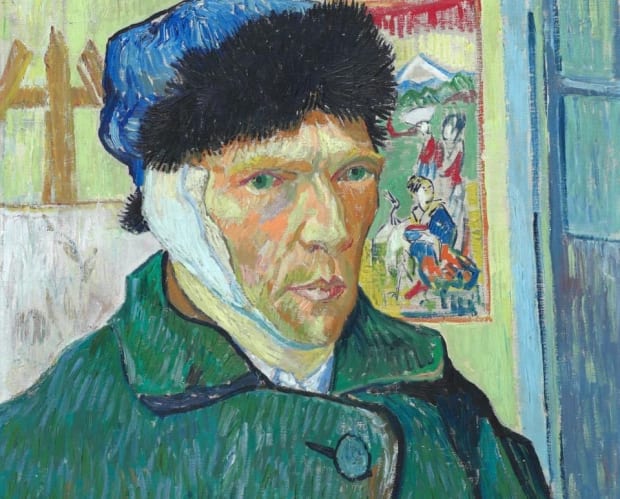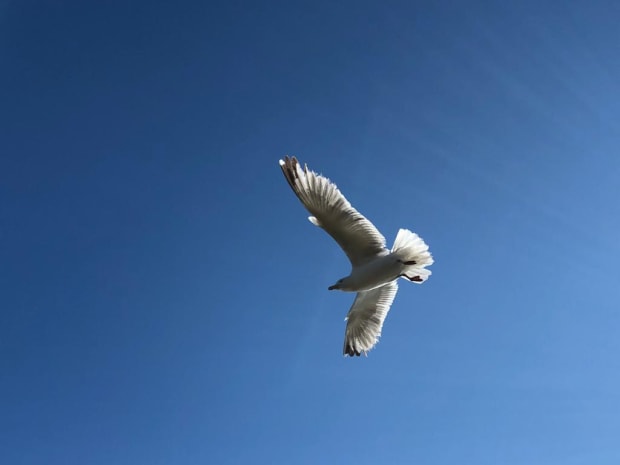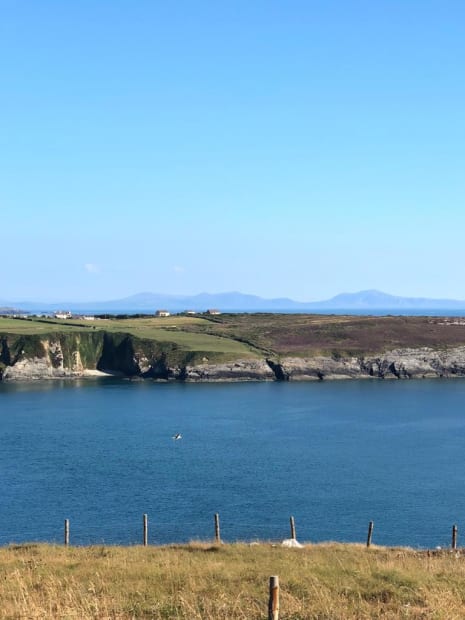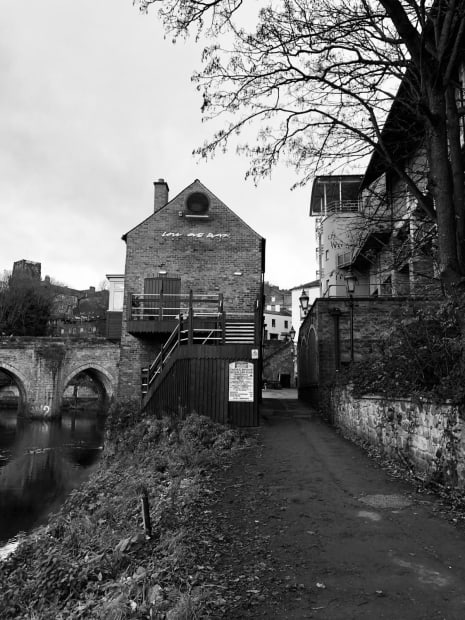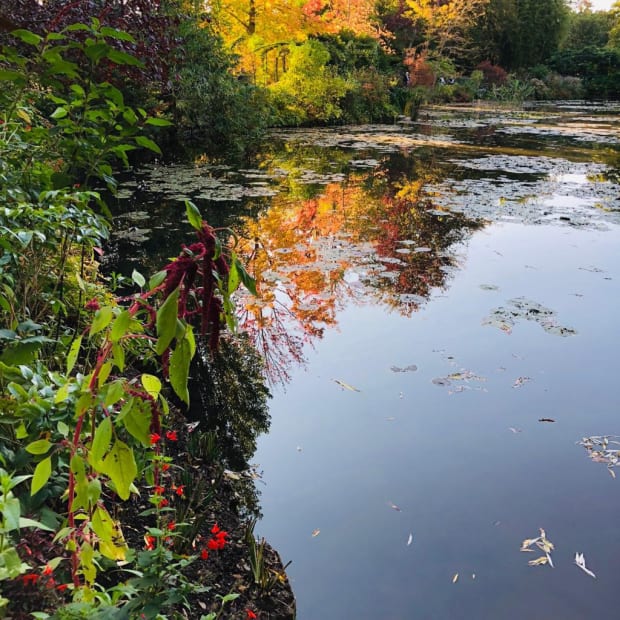The dirt and thick over-paint coating a Renaissance masterpiece can obscure the true shape of what lies beneath. But when it comes to Salvator Mundi, that infamous study of Jesus Christ attributed by many to Leonardo da Vinci, the layers of intrigue covering the picture now match the murky stages of its lengthy restoration.
Last week another hidden layer of the story was uncovered, with fresh evidence of the likely destiny of the missing, record-breaking $450m (£360m) work of art.
The blank, beatific portrait dates to 1500 and might not initially be suspected of having, so far, cast a shadow over the reputation of two great European museums – the Louvre in Paris and London’s National Gallery – or of prompting lawsuits and rows between art historians and leading auction houses.
Now, according to revelations in a BBC documentary about Saudi Arabia, Salvator Mundi is about to be deployed by a Gulf potentate as the centrepiece of a grand new museum, designed specifically, some say, to “art-wash” away a bad name for human rights.The work’s notoriety since its staggering sale in 2017 and immediate disappearance, together with its association with Leonardo’s great Mona Lisa, are being banked upon, it seems, to put a new Louvre in Saudi Arabia on the cultural map.For Renaissance art expert Alison Cole, the Art Newspaper’s editor-at-large, new clues about the painting’s whereabouts have confirmed her suspicions. “The revelation that the Salvator Mundi is planned as the anchor exhibit of a new ‘very large’ museum in Riyadh – in the expectation that it will have the same extraordinary pulling power as the Mona Lisa – comes as no surprise,” she told the Observer.
“It was described as ‘the male Mona Lisa’ by Leonardo expert Martin Kemp and the term was enthusiastically adopted by Christie’s when the painting was consigned to auction in 2017. Ahead of the sale, Francois de Poortere of Christie’s New York said: ‘This is the holy grail of Old Master paintings: some people call it the male Mona Lisa. People are deeply taken by this work. You could buy it and just build an entire museum around it.’”Cole wonders, as does the Leonardo scholar Margaret Dalivalle, if De Poortere already knew something the rest of the world did not.
In the 19 August episode of the documentary The Kingdom: The World’s Most Powerful Prince, a Princeton University professor spoke of plans for a big museum discussed with Saudi Arabia’s crown prince, Mohammed bin Salman. The prince was the secret bidder who took the painting to its world-beating price in New York in 2017 and now the Princeton academic Bernard Haykel is suggesting the “missing” portrait is secure inside a vault in Geneva, ready to step into the limelight as a key part of Prince Mohammed’s bold cultural strategy, known as Saudi Vision 2030.
Haykel claims he was also told by the Saudi culture minister, Prince Badr bin Abdullah bin Mohammed bin Farhan al-Saud, that the picture has been there since its purchase. “It’s waiting for the museum to be completed and then it’ll hang in the museum,” he added.
A new Louvre in Riyadh would be a second Gulf “outlet” for the Paris museum. The neighbouring United Arab Emirates opened up its own Louvre in Abu Dhabi at the time of the Salvator Mundi’s auction, so some had expected the painting to reappear there first.
If the painting is instead to become the “anchor” of a Riyadh institution, that might be a fittingly nautical term: only five years ago the art writer and dealer Kenny Schachter claimed a scoop when he wrote that the portrait was being kept on Prince Mohammed’s 134-metre superyacht, the Serene.
Speaking this weekend, Schachter was characteristically blunt, restating the “bulletproof” status of his source. He claimed the prince’s yacht had been a safe hideaway because, “like anywhere he rests his royal ass”, it would be climate-controlled. He still believes the painting is “within arm’s reach”, arguing: “There’s no way a brat as spoiled as him does not have the work at his fingertips.” Schachter justifies his disdain for the prince by pointing to Saudi’s murderous treatment of journalist Jamal Khashoggi in 2018.
If you want a reproduction of Salvator Mundi for yourself, you could go to a small museum in New York, dedicated to the controversial artwork and reopening this weekend after a break-in. Some of the branded memorabilia on sale – from underpants and playing cards to a Barbie-fied pink poster – are clearly ironic. All the same, this image of an impassive saviour raising his hand in benediction has by now reached the merchandisable heights of the face of the late rapper Tupac Shakur, or an outline of Che Guevara in a beret, if not of the Mona Lisa herself.
Someone with a much bigger wallet could instead track down one of around 27 early copies of Leonardo’s design for the portrait, all made in his workshop. Or it might be quicker to just get hold of one of the convincing later fakes that pop up. The genuine 500-year-old painting, known as “the Cook version” and now attributed at the very least to Leonardo’s assistants, remains much harder to locate.
It is called the “Cook” because in 1900 it was sold for £120 to Sir Francis Cook, a British merchant and collector, who accepted its attribution to the painter Bernardino Luini. It then made a splash in the modern world in 2005, when it was “rediscovered” and bought by a consortium of art dealers for $1,000, before being painstakingly restored over three years by the husband and wife team Mario and Dianne Modestini. A new television series, starring Julianne Moore as Dianne, is soon to tell this story. The drama, also produced by Moore, is largely based on the 2021 documentary The Lost Leonardo, in which both Cole and Schachter appeared.
Salvator Mundi became a household name when the National Gallery included it in a 2011 blockbuster show devoted to its putative creator. The London curators had moved in quickly, following the excitement of the first attribution of a painting to Leonardo for more than a century. The gallery has since claimed it had no knowledge of any upcoming sale, although disputes continue about the internal process of attribution and, in particular, about the wording of the show’s catalogue, which left little room for doubt about the level of Leonardo’s input.
A National Gallery spokesperson said recently that decisions about showing such a loaned work follow a period of weighing up “the advantage in including it – the benefit to the public in seeing the work, the advantage to the argument and scholarship of the exhibition as a whole”. But that defence is not persuasive enough for Ben Lewis, author of The Last Leonardo, an incendiary book that questions the gallery’s methods and notes that London’s prestigious rubber-stamping of it as a full Leonardo proved quite useful to Christie’s come auction time.
Meanwhile, legal wrangles have rumbled on involving Sotheby’s, a Swiss art dealer called Yves Bouvier and a Russian billionaire, Dmitry Rybolovlev, a former owner of Salvator Mundi, who this year lost one of these ongoing claims. This suit was against Sotheby’s, which he had accused of a fraud linked to his purchase of the painting and other works via Bouvier in 2013. Rybolovlev, by the way, is also thought to have kept Salvator Mundi in storage in Geneva until its spectacular auction in 2017.
The Louvre may have struck lucrative franchise deals in the Gulf, but it too has not escaped controversy. In 2019, Salvator Mundi was to have been displayed in Paris for the first time since its sale. Prince Mohammed had wanted his work hung next to the Mona Lisa, it was claimed in a French documentary – and, despite the museum’s denials, Cole and the Art Newspaper later got sight of a suppressed booklet, produced by the Louvre, that detailed a scientific examination of the painting, looking at similarities with sketch lines visible behind the enigmatic smile of La Gioconda.
At the last minute, though, the painting was withdrawn from the show. It is now thought President Macron had refused to place the works side by side.
Tainted with dishonour and doubt, perhaps Salvator Mundi might prove just the right “anchor object” for a museum in Riyadh intended to distract international attention from a chequered human rights record.
And while the portrait’s financial value remains disputed, by now the number of words of conjecture, criticism and academic analysis it has generated make it worth at least its own small library.
#salvatormundi #leonardodavinci #art #jesus #davinci #artcollector #christies #oilpainting #jesuschrist #fineart #contemporaryart #artoftheday #photography #artist #christ #easter #arte #catholic #catholicchurch #artwork #painting #masterpiece #davinciart #kunst #instaart #benlewis #italy #salvator #yesus #instaartist
-
Kite flying in Flamborough
18.02.24 Art Thought #37
-
-
-
-

-
-

A Life In Art: By Kate Houghton
22.06.21 Art Thought #31The below interview, featured in Living Edge Magazine and published on https://www.greatbritishlife.co.uk/people/shabs-beigh-altrincham-artist-8077138 dives into the past, present and future of my life as an artist.
Artist Shabs Beigh is inspired by what he sees around him, and is taking the sights of Altrincham to the walls of LA.
Shabs Beigh grew up in northern India, attended an army boarding school and had his future pretty much mapped out – if only it wasn’t for his passionate obsession with art. At 17, despite heading for a place at university to study physics, he knocked on the door of a local newspaper publisher, asked why they didn’t have a cartoonist and illustrator, requested the role – and got it.
‘I didn’t like to ask my parents for money,’ he says, ‘so I offered to work for the publisher for one month for free, to prove myself. I had always known how to draw, from a very early age, and the art teacher at school had taken me under his wing, having me do everything possible art-related in the school. At first I drew cartoons for the children’s comic, then caricatures and more satirical, political cartoons. I was only 17, but was obsessed by wanting to see my work, my name, in print.
‘The consciousness that I can draw was always there. Funnily enough, the fact that I am a painter by temperament – that took me 40 years to realise. Ability to draw is one thing, but the consciousness that of the fact that by nature you are an artist, is a different thing. To be able to convey an emotion, to focus on something obsessively until you are an authority on that subject, to paint and paint until you have it right... I went to Claude Monet’s house in France, to look at the garden. I wanted to see first-hand what he saw. I realised that he never painted his garden in autumn. When I arrived in Giverny, in September 2019, I had been contemplating for a year an attempt at impressionistic work based on his pond. I was actually scared of attempting it, because it’s quite a big task to draw work that is ‘Monet-ist', so well-known, and expect people to say “oh, that’s alright”. I did a series on the pond, however, and they all sold.’
A move to the UK to study for a Masters led to a decision to settle in Altrincham, not only for a career, but because of the travel links across the UK and further afield.
‘I love to travel, and when I travel I am inspired, and I paint what I am inspired by.’
Shabs’ work scatters across the globe. He has followers on his social media platforms from almost every continent, maintaining contact with them through regular emails, though he says nothing beats meeting people face-to-face and actually talking about his work.
‘In 2019 I took part in 20 art fairs here in the UK. I love it when people come to my stand and we talk, and I can explain my work and the inspiration.’
In 2019 he was accepted by Saatchi Art, which ‘collects’ artists from all over the world and curates exhibitions across the globe. It’s a complicated process, with submissions, interviews, assessments... but Shabs has now not only been invited to join, but was chosen as one of the top 10% of artists to feature in the Saatchi Spring Catalogue in the USA.
‘The curators at Saatchi seem to think my work will appeal more to the US audience than the UK, so they put my art in shows in LA and Chicago, and it sells, so they must know what they’re doing,’ he laughs. ‘I went to LA and to Chicago in 2019. 2020 it was all virtual, of course, but I had hoped to go back to LA this month, but travel restrictions don’t allow – I plan to go in September, however.’
Lockdown and travel restrictions mean that Shabs’ latest body of work, and indeed the one before that, have been inspired by subjects closer to home.
‘During lockdown, and still now, I would walk every day to Dunham Massey. The first lockdown it was so quiet, my only companions were the ravens. They’re so clever and I could watch them for hours. I decided to do a series of ink drawings, which have really been popular, both the originals and the limited edition prints.
‘This year, I became obsessed with the magnolia trees I would see on my walks. I love these flowers, and they bloom for such a short time, I wanted to capture every stage.’
His paintings and prints of the magnolias that inspired him have already started winging their way around the world, and hang on walls from Mumbai to SoCal.
‘I am obsessed with the British coastline. I intend to paint it all, like no one else. It will be at least a 15-year project.’
And no doubt, like his other work, will also end up on walls across the globe.
-
-

A few siblings pooled some money together and bought a River Wharf print as a surprise gift for their mum, Pam, who follows me on instagram. One of those siblings, Sarah Wright, wrote the below blog.
Mother’s day is always a special time in our household and my three siblings and I always try to do something to mark the occasion. A few years ago, my eldest brother flew in from Copenghagen to surprise her. With the current circumstances, we knew that seeing one another wouldn’t be possible but we still wanted to capture that essence of surprise, joy and gratitude towards our mum. We contemplated what we could do and then I recalled...
Last Autumn, as part of my support bubble, I went to visit her and as we sat nestled in the living room of her home in the foothills of Snowdonia we discussed the possibilities of a vacant space above the mantelpiece. A large mirror had hung there previously; a few years ago we renovated and it never went back up. There was an opportunity to fill the space with something interesting, beautiful and emotive. Snowdonia is known for its picturesque and diverse landscape and so it seemed fitting to find a print that paralleled its unique beauty. We measured the space and entered into one of those wistful daydreams where you start to visualise about what would bring the room to life.
This is how the topic of Shabs’ artwork came about. Mum has always been interested in Art; an interest that she has passed on to us. Like many of us over lockdown, she rediscovered her love of an old hobby; painting. She always enjoys finding new artwork on Instagram which is how she discovered Shabs. She showed me his catalogue of paintings and one stood out for this space immediately....River Wharf.
As our eyes were drawn closely into River Wharf, we noticed the blue and green hues of the piece encapsulated the word ‘glas’ in Welsh which means the rich blues and greens that are found in nature. The way the trees gracefully bow and dip into the water and hint at a mystical world behind them is what collectively captivated our imaginations and transported us back to childhood days spent on the river bodyboarding, swimming and panning for fool's gold. It immediately invoked a strong sense of place, the smell of fresh plants and the feel of the cool water trickling over your toes.
That is what’s so masterful about the painting; it has a universal appeal as we each have a memory associated with a river. I asked my mum what she liked about the painting and she said she was ‘enchanted' by River Wharf, with the sensitivity captured in it's serenity. The deep colours of the foliage and the tree canopy gave me the feeling of being there in reality. The light bouncing over the river brought back happy memories of many river walks and days spent on the riverbank. It's a print to feel peaceful with, whilst daydreaming away time spent by the riverside. I also admired the precision, and skill of the immensely talented artist, Shabs in capturing that unique river moment, when light streams through the green to reflect and dance on the water.’
The painting is inspired by Monet, who converted an old fishing boat into a floating studio in 1872 and spent his time observing the verdant scenes of the River Seine at different points throughout the day. Shabs was inspired to paint River Wharf after enjoying morning walks in Wetherby, Yorkshire, drinking in all of the vivid colours surrounding this section of the river. The quiet contemplation and calm that Shabs has captured reminds me of a poem by Wendell Berry called The Peace of Wild Things:
I come into the presence of still water.
And I feel above me the day-blind stars waiting with their light.
For a time
I rest in the grace of the world, and am free.
My mum isn’t easy to surprise; she’s good at piecing clues together. However, we really did manage to pull this one off! Shabs literally went the extra mile to hand deliver the print in time for Mother’s Day, along with a lovely card . She was overjoyed with the present...and has since informed us that she rather likes Lilies in Blue and there’s an empty wall space waiting in the office reserved for next Mother’s Day…
-
-
-
-
-
-
-
-
-
-
-
-
-
-
-
-
-
-
-

-
-
-
-

-

-
-

-

-
-

-
26.09.19 Art Thought #2
Salvador DaliWhile we were in Santa Monica, myself and my art agent Leon Jeffrey were lucky enough to meet some amazing people from all walks of life. I was blown away by a story from one such gentleman, Luciano.
He used to live next door to Salvador Dali – the (now) well-known Spanish surrealist painter. However at that time, Dali wasn’t a famous painter, and would often bother Luciano for food etc. On one particular day, he took an expensive tie from Luciano and proudly signed his name across it – Salvador Dali. Although he meant it to be a thoughtful gesture and an investment, Luciano was not at all happy and when Dali left he binned the tie!
Decades later, we could laugh over coffee together at Luciano’s hasty mistake. The moral being: Never throw away something an artist has signed for you – It may just become worth something!
-
-

-
Why Do I Paint ?
It is an urge. A strong impulse to draw and do a visual dialogue. Expressing how I feel at the time about a subject that would have been on my mind for days, weeks, months, even years. And suddenly after a lot of soliloquy and procrastination I would pour my intuition on to the canvas or paper with a lot of energy in short bursts. I can't stop till I am drained of the energy burst that was bubbling. I have to identify with the subject, feel it and in some cases, I have to have touched, felt or visited the landscape or been around the animal. There is always an emotion or feeling that lingers on, even if the experience was years ago.
For example, the bulls and bisons series took birth from early childhood memories. The impressionist works were done after a pilgrimage to claud monet's house in Giverny, France last year
Even the kites series - As a kid, I loved flying kites. You feel a sense of achievement working against the wind manoeuvrIng the direction height etc . I still fly kites with my kids now, more often on the beaches of north west England. Indian kites are fascinating . The paper they are made of, the bright happy colours . It is an art form in itself - the making of the kites , the design . Yes I have read and seen the kite runner too ha. I am fascinated with the shape, form and colours and the feeling that goes with it. I have started a series on kites . Paul smith Interior Design London has recently started selling my works and the first few paintings they have chosen are kites.
-



































